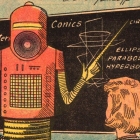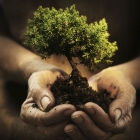-
 +14 +1
+14 +1Amazon's plastic packaging waste could encircle the globe 500 times
The plastic packaging of the products we buy online is actually hiding a major environmental problem, a new report showed. Amazon, considered the world’s largest retailer, was responsible for 211,000 metric tons (465 million pounds) of plastic packaging waste last year, 10,000 tons (22 million pounds) of which ended up in the world’s freshwater and marine ecosystems.
-
 +22 +1
+22 +1Microplastics may be linked to inflammatory bowel disease, study finds
People with inflammatory bowel disease have 50% more microplastics in their faeces, a study has revealed. Previous research has shown that microplastics can cause intestinal inflammation and other gut problems in laboratory animals, but the research is the first to investigate potential effects on humans. The scientists found 42 microplastic pieces per gram in dried samples from people with IBD and 28 pieces in those from healthy people.
-
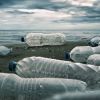 +20 +1
+20 +1Microbes across the land and ocean are evolving to degrade plastic
Five years ago, scientists digging through soil and sludge around a plastics recycling center in Japan discovered a bacterium that was feeding on the popular packaging material PET as an energy source, with help from a pair of purposely evolved enzymes. A fascinating discovery at the time, a new study has shown this to be part of a much wider trend in which such plastic-degrading enzymes are increasing in numbers and diversity in response to plastic pollution around the world.
-
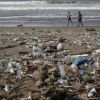 +4 +1
+4 +1Bugs across globe are evolving to eat plastic, study finds
Microbes in oceans and soils across the globe are evolving to eat plastic, according to a study. The research scanned more than 200m genes found in DNA samples taken from the environment and found 30,000 different enzymes that could degrade 10 different types of plastic.
-
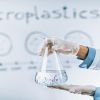 +21 +1
+21 +1Microplastics Can Kill Human Cells at Concentrations Found in the Environment, Scientists Say
One of the major concerns surrounding plastic pollution is that microplastics may work their way from the ocean or soil, into tiny organisms, up the food chain and onto our plates. However, scientists are still unsure what ingesting microplastics actually does to human health.
-
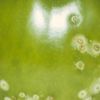 +15 +1
+15 +1Can Bacteria Solve Our Plastic Pollution Problem?
About 360 Million years ago, a toxic material that could not easily be broken down arose on planet Earth. The stuff would persist for thousands of years, amassing on land (and especially in forests) in daunting piles. These mounds stuck around for millions of years, so long that a heap of them fossilized. Today, humans dig up these deposits to burn as fossil fuel.
-
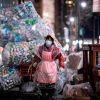 +15 +1
+15 +1‘Deluge of plastic waste’: US is world’s biggest plastic polluter
The US is the world’s biggest culprit in generating plastic waste and the country urgently needs a new strategy to curb the vast amount of plastic that ends up in the oceans, a new report submitted to the federal government has found.
-
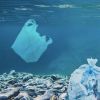 +24 +1
+24 +1Plastic Pollution Overruns the Mediterranean
Pascal Hagmann lowered a manta trawl — a ray-shaped, metal device with a wide mouth and a fine-meshed net — off the side of his sailboat and into the blue waters off the coast of Marseille, France. Then he motored around at 3 knots. The manta trawl skimmed along the surface, taking in gulps of seawater and catching whatever was floating inside it.
-
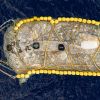 +18 +1
+18 +1A half-mile installation just took 20,000 pounds of plastic out of the Pacific — proof that ocean garbage can be cleaned
It's been nearly a decade since Boyan Slat announced at age 18 that he had a plan to rid the world's oceans of plastic. Slat, now 27, is a Dutch inventor and the founder of the Ocean Cleanup, a nonprofit that aims to remove 90% of floating ocean plastic by 2040.
-
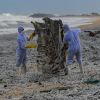 +14 +1
+14 +1Plastic Waste from Burning Ship Buries Sri Lanka's Coastline
Tonnes of plastic waste from a burning container ship is washing ashore in Sri Lanka in what’s likely the nation’s worst beach pollution crisis to date, a senior environmental official told AFP on Saturday.
-
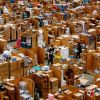 +19 +1
+19 +1Amazon shareholders to vote on revealing retailer’s plastic footprint
Amazon is under pressure to reduce its plastic footprint, as shareholders prepare to vote on Wednesday on a resolution calling for it to disclose how much of its plastic packaging ends up in the environment.
-
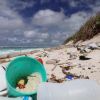 +15 +1
+15 +1Plastic debris on remote islands raises temperatures by 2.5C and threatens turtle populations
Study of Henderson Island and the Cocos (Keeling) Islands finds plastic acts as an insulator, making sand hotter and leading to more female turtle offspring.
-
 +21 +1
+21 +1Fish have been swallowing microplastics since the 1950s
Researchers examined the guts of freshwater fish preserved in museum collections; they found that fish have been swallowing microplastics since the 1950s and that the concentration of microplastics in their guts has increased over time.
-
 +23 +1
+23 +1‘Single-use plastics’ to be phased out in Australia from 2025 include plastic utensils and straws
Plastic cutlery and straws are among the types of single-use plastics to be phased out in Australia from 2025 under a plan to reduce plastic waste.
-
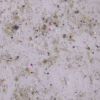 +23 +1
+23 +1Plastic Is Falling From the Sky. But Where’s It Coming From?
If you find yourself in some secluded spot in the American West—maybe Yellowstone, or the deserts of Utah, or the forests of Oregon—take a deep breath and get some fresh air along with some microplastic. According to new modeling, 1,100 tons of it is currently floating above the western US. The stuff is falling out of the sky, tainting the most remote corners of North America—and the world. As I’ve said before, plastic rain is the new acid rain.
-
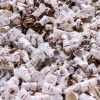 +15 +1
+15 +1Confronting plastic pollution to protect environmental and public health
Some 8,300 million metric tons of plastics have been manufactured since production exploded in the 1950s, with more than 75 percent ending up as waste and 15 million metric tons reaching oceans every year. Plastic waste fragments into increasingly smaller but environmentally persistent "microplastics," with potentially harmful effects on the health of people, wildlife and ecosystems.
-
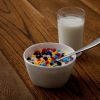 +17 +1
+17 +1In Pictures: How much plastic are you eating?
What’s for dinner? Lego sushi, credit card burgers, or a well-done piece of PVC pipe? These examples may sound extreme, but can easily represent over time the cumulative amount of microscopic pieces of plastic people consume every day.
-
 +18 +1
+18 +1Glitter is an environmental abomination. It's time to stop using it
Glitter is notorious for getting everywhere – touch one sparkly Christmas card and you’ll be finding flecks of the stuff in your food, hair and carpet for months. It’s so obnoxious some people even slather a mixture of it and Vaseline on political yard signs to punish thieves. But the real issue with glitter isn’t that it’s annoying – it’s that it truly does get everywhere: not just in your home, but also into the furthest-flung corners of the Earth.
-
 +14 +1
+14 +1Japan wins war on plastic, but shoplifters bag hidden spoils
Charging for plastic bags has led to some customers concealing goods in their reusable bags, supermarket chains say
Submit a link
Start a discussion


